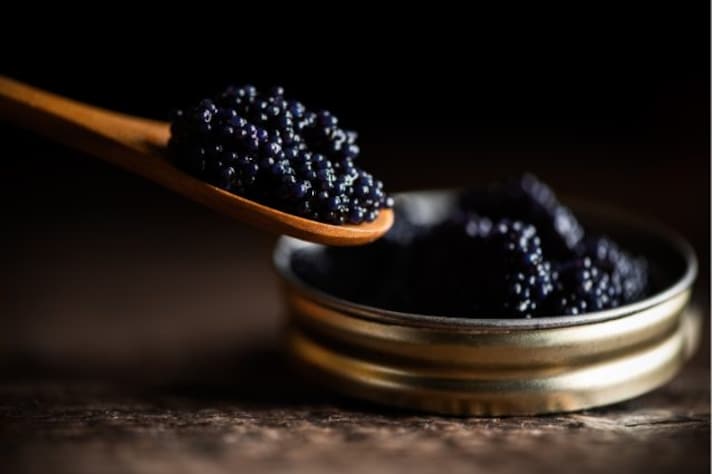Here’s Why You Should Never Attempt to Cook Caviar
Caviar, one of the world's most expensive delicacies, should never be cooked: heat destroys its delicate texture and nuanced flavor, turning it into a rubbery, salty mess. Instead, caviar should be enjoyed raw, chilled, and minimally garnished to preserve its luxurious taste and texture.

It's one of the most expensive foods in the world, it's black, Russian, and extremely famous among the rich and famous. It's caviar. There's a myriad of myths surrounding this luxurious delicacy, but one universal truth stands tall—apart from it being very heavy on the wallet—it should never be cooked. Why, you ask?
The Delicate Nature of Caviar
Caviar, essentially salt-cured fish eggs, is a delicacy that demands respect for its delicate texture and nuanced flavor. Cooking caviar would be akin to painting over a masterpiece; it obliterates the very essence of what makes it special. The heat from cooking alters its texture, turning the once buttery and smooth pearls into a rubbery, unpleasant mess. Furthermore, the subtle, briny flavor that caviar aficionados treasure is lost, replaced by a fishy taste that is anything but appetizing. It's like turning a Mozart symphony into a cacophony of noise—simply sacrilegious.

What Happens When You Cook It?
When exposed to heat, caviar undergoes a transformation that is far from desirable. The delicate membrane of the eggs bursts, releasing a briny liquid that, combined with heat, becomes overly salty and pungent. The visual appeal of those glistening, pearlescent beads vanishes, replaced by a mushy, unappetizing blob. Imagine turning a prized bottle of champagne into flat, warm soda—that's the culinary crime committed when caviar is cooked. This is why incorporating caviar into dishes that will be cooked is equally disastrous; the end result is always a textural and flavorful catastrophe.
How Caviar Should Be Enjoyed
So, if cooking caviar is a cardinal sin, how should it be enjoyed? The answer is simple: raw and with minimal interference. The classic method is to serve caviar chilled on a bed of ice, accompanied by blinis, toast points, or lightly buttered crackers. A dollop of crème fraîche and a sprinkle of finely chopped chives complement the caviar without overshadowing it. For the purists, a mother-of-pearl spoon is essential to avoid any metallic taste that could alter the delicate flavor of the eggs.
Caviar is not only a luxury for the palate but also safe to consume raw, thanks to the meticulous curing process that preserves it. This process ensures that the caviar is not only delicious but also free from harmful bacteria. So, rest assured, you can indulge in this opulent treat without a second thought.
;Resize,width=767;)
;Resize,width=712;)
;Resize,width=712;)
;Resize,width=712;)
